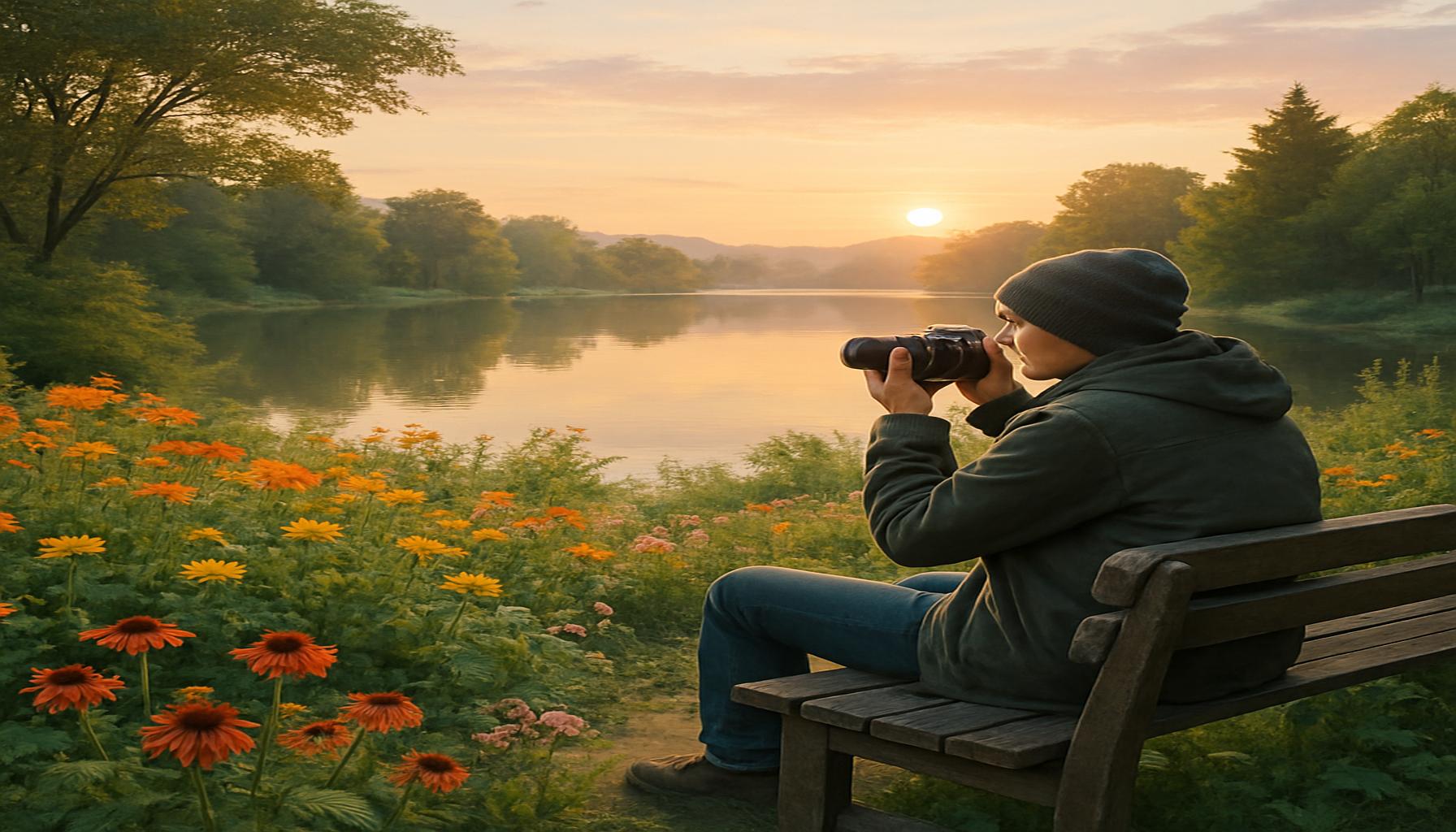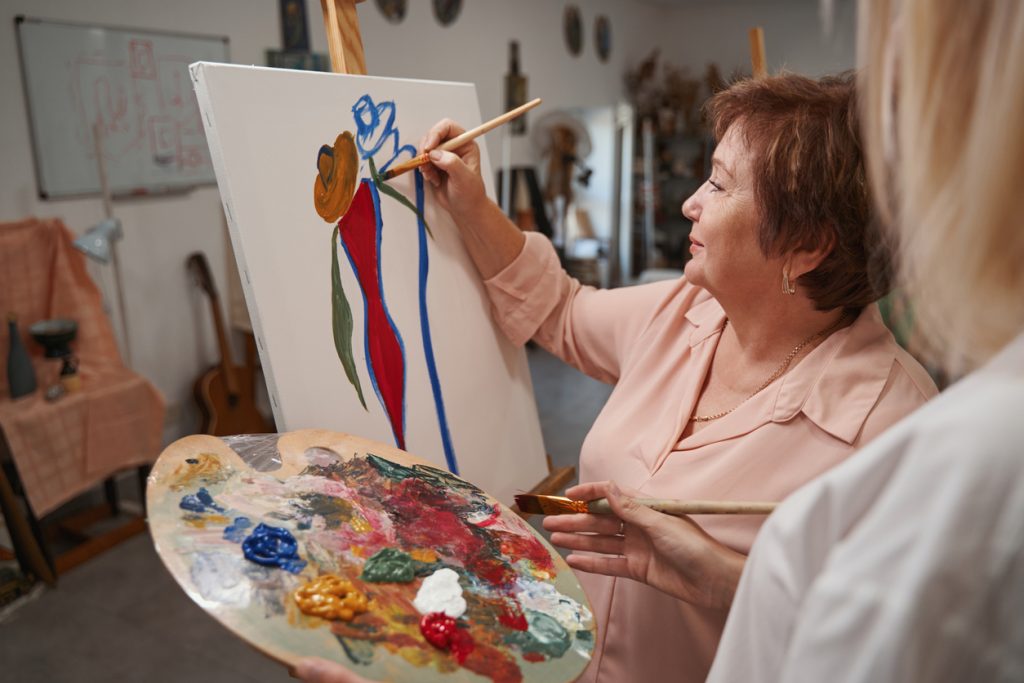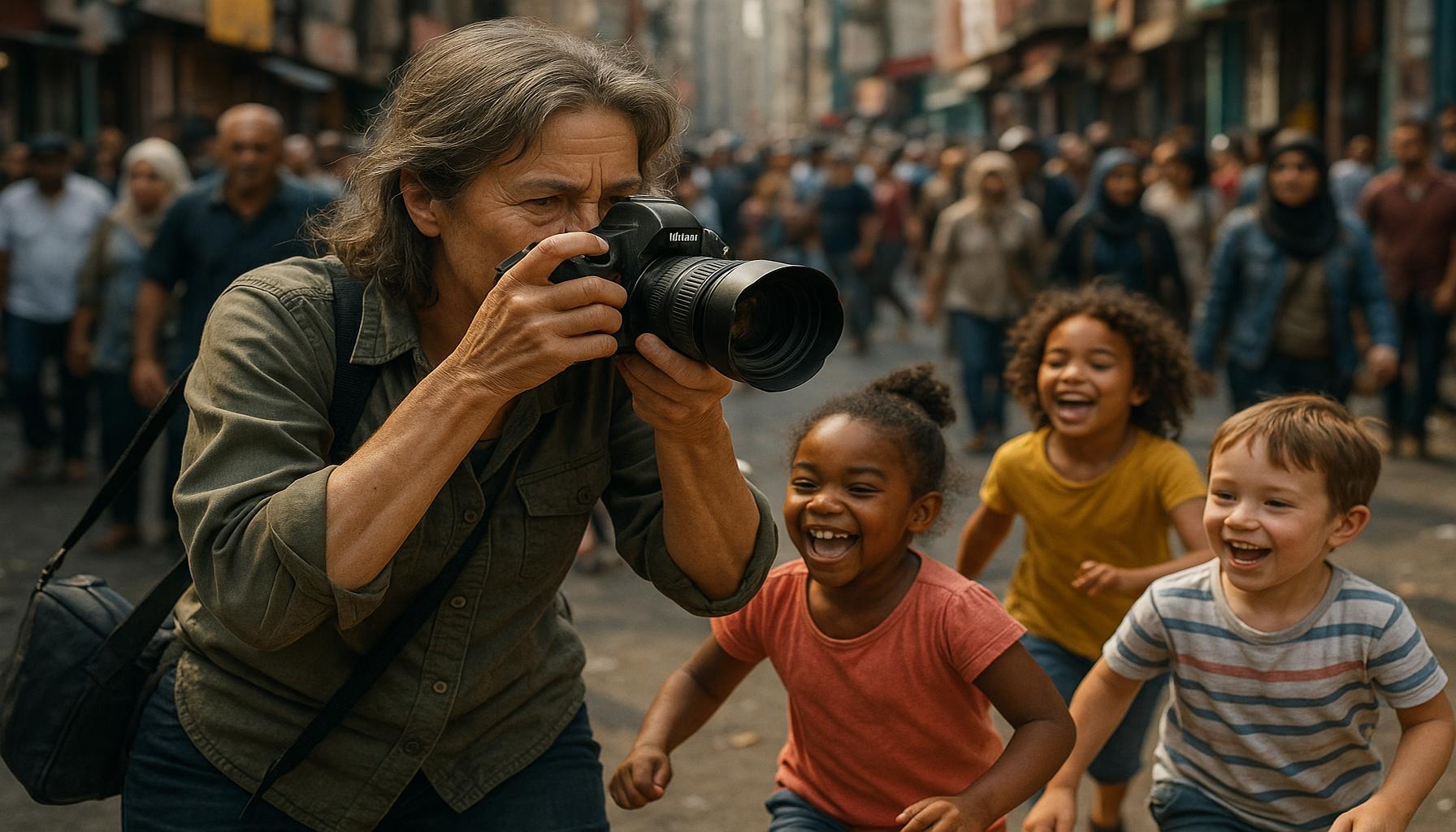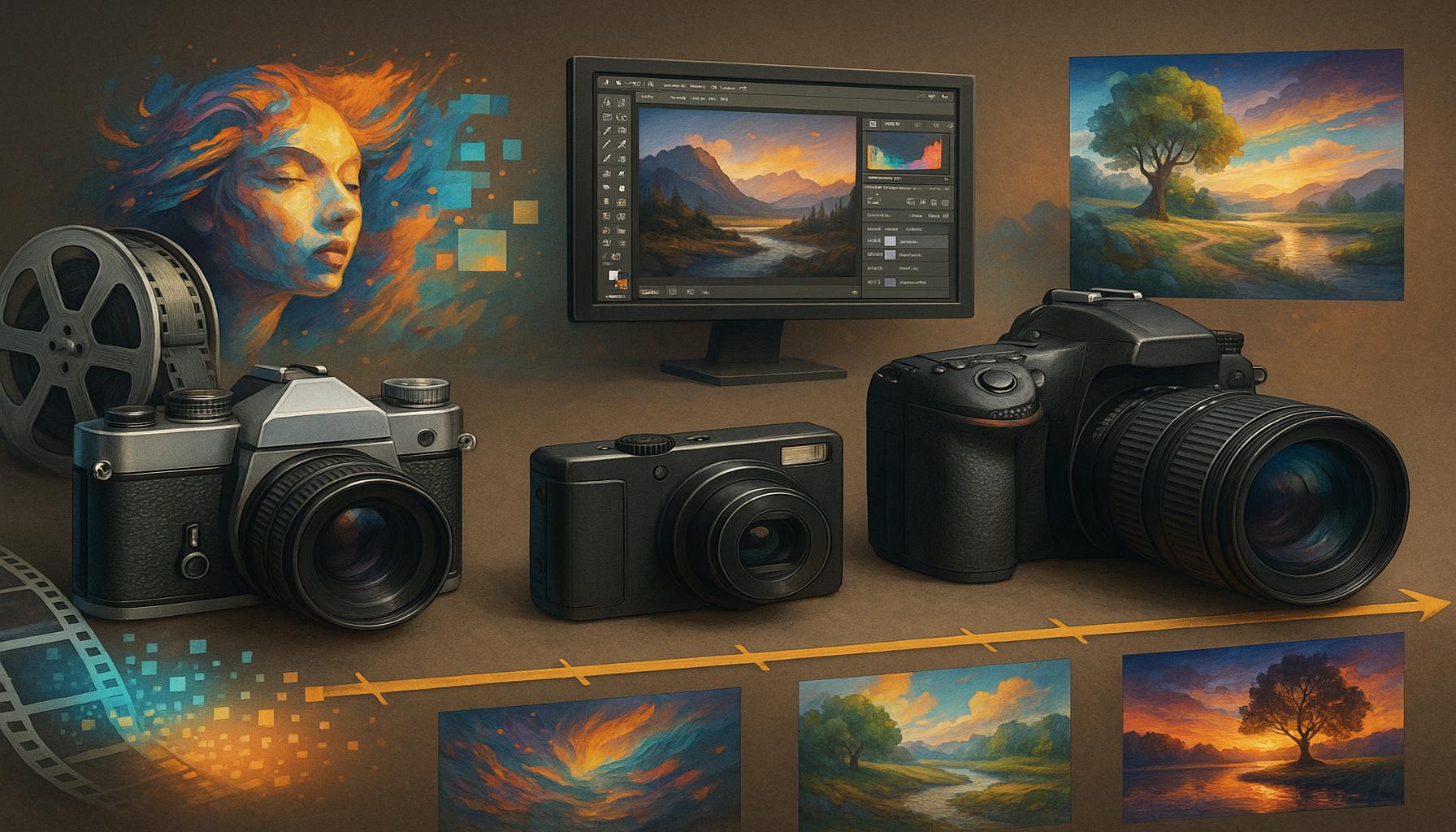Photography Therapy Emotional and Mental Benefits Unveiled

Exploring the Healing Power of Photography
In today’s fast-paced world, finding moments of peace and clarity can be challenging. Embracing creative hobbies, such as photography, offers not only a way to express oneself but also a unique form of emotional and mental therapy. This practice allows individuals to connect with their surroundings, expressing thoughts and feelings that might be hard to articulate through words.
The act of capturing images can lead to profound changes in how one perceives and processes their emotions. Engaging with photography has been linked to benefits like:
- Increased mindfulness and presence in the moment
- Enhanced self-esteem through personal expression
- Stress reduction during the creative process
- Opportunities for reflection on personal experiences
- Connection with community through shared art
In the following sections, we will delve deeper into the impact of photography as therapeutic practice and unveil our ranking of the top five benefits it offers, inspiring you to explore this powerful medium. Get ready to discover how the lens can be a gateway to healing and insight.
Top 5: Photography as a Form of Therapy – Exploring the Emotional and Mental Impact of Photographic Practice
Photography has long been revered as a powerful medium to capture fleeting moments, yet its therapeutic potential is becoming increasingly recognized in our modern world, which is progressively emphasizing mental health awareness. This enlightening exploration delves into the top five ways photography serves as a form of therapy, inviting you to discover how engaging in this art can enhance emotional well-being.
5. Building Connections Through Shared Experiences
Photography can serve as a bridge connecting individuals who share an enthusiasm for this creative pursuit. When people collaborate in photographic endeavors, they often engage in discussions about the techniques, contexts, and emotions related to their work. This sharing process is more than technical; it fosters a sense of community and support, which is exceptionally beneficial for those navigating emotional hardships. Through this exchange, individuals feel heard and understood, leading to enhanced self-esteem and alleviation of isolation.

- Support Groups: Many therapeutic support groups incorporate photography projects, allowing participants to share their personal journeys and build deeper connections through a common interest.
- Social Media: Platforms like Instagram and Flickr provide spaces for photographers to share their creations, receiving affirmations that can be particularly validating and encouraging.
Consider engaging in local photography clubs or attending workshops dedicated to photographic excellence to further connect with like-minded individuals, thereby enriching your social experiences and emotional well-being.
4. Encouraging Mindfulness and Presence
The craft of photography inherently requires a deep presence and acute awareness of one’s environment. Photographers often become wholly absorbed in identifying the perfect angle, capturing ambient light, or seizing an unforeseen moment. This singular focus promotes a state of mindfulness, providing a break from overwhelming thoughts and reducing anxiety. As participants hone their skills, they gradually learn to live in the present, a skill that considerably enhances mental health.
- Nature Photography: By capturing the serene beauty of natural landscapes, individuals can foster a greater appreciation for the world around them, which can be profoundly calming.
- Urban Exploration: Using photography to document urban life encourages an active, engaged interaction with one’s surroundings, finding charm in everyday details.
Embarking on photographic journeys through different environments can serve as an exercise in mindfulness and might inspire you to view familiar settings with renewed curiosity and appreciation.
3. A Medium for Self-Expression
For many, verbalizing emotions can be daunting. Photography provides an alternative form of self-expression, empowering individuals to communicate their inner worlds visually. Whether through carefully staged portraits, abstract representations, or candid documentary photography, this medium facilitates the articulation of complex emotional narratives.
- Personal Projects: Tailoring personal projects around individual triumphs or struggles offers an avenue to creatively explore and process emotions.
- Therapeutic Assignments: Integrative therapy approaches often incorporate photography assignments, enabling clients to externalize and confront their internal experiences visually.
Engaging in photography could lead to discovering new dimensions of personal identity previously unvoiced, expanding the horizons for self-awareness and growth.
2. Facilitating Emotional Processing
Photography can act as a reflective tool that aids in emotional processing. As individuals capture images, they may inadvertently revisit personal memories and experiences that require reconciliation. This confrontation, though challenging, can be liberating, guiding individuals to a better understanding of difficult emotions and facilitating healing.
- Photo Journaling: Creating a photo journal allows for the documentation of one’s emotional journey, providing a tangible record of growth and clarity over time.
- Creating Visual Narratives: By constructing visual stories, photographers can depict personal histories and work toward overcoming traumatic experiences with increased perspective.
Consider implementing a regular practice of photo journaling as part of your routine to assist in mapping emotional landscapes and fostering insightful reflection.
1. Enhancing Overall Mental Well-Being
Ultimately, photography has been documented to significantly enhance overall mental well-being. Engaging in creative activities such as photography is associated with reduced symptoms of anxiety and depression. Various elements contribute to this, including the satisfaction of creating art, the joy derived from capturing poignant moments, and the empowerment gained through skill development.
- Skill Development: The process of learning and mastering photography can provide individuals with a sense of accomplishment and personal growth.
- Therapeutic Photography Programs: Many organizations offer structured workshops that leverage photography as a therapeutic technique, assisting participants in navigating their emotions constructively.
The nurturing of a creative skill like photography not only enriches the soul but also anchors a sense of purpose and belonging, reinforcing mental resilience.
In conclusion, photography transcends its function as an artistic pursuit, emerging as a potent therapeutic tool. By fostering connections, promoting mindfulness, and offering avenues for self-expression and emotional reconciliation, photography extends a broad spectrum of benefits for boosting mental well-being. Delve into the therapeutic power of photography, and you may discover not just a pastime but an invaluable resource for cultivating emotional healing and self-discovery.
Photography, often seen merely as a creative outlet, has evolved into a powerful therapeutic tool embraced in various psychological practices. The rich and multifaceted benefits of engaging with photography extend beyond mere artistic expression and delve into the emotional and mental realms of self-discovery and healing. As we explore the therapeutic aspects of photography, it is essential to recognize its capacity to foster communication, create connections, and illuminate personal experiences.One significant aspect of photography as therapy is its ability to facilitate emotional expression. Many people find it challenging to articulate their feelings, particularly those dealing with trauma or mental health issues. Instead of verbally communicating these emotions, photography allows individuals to manifest their internal landscapes visually. By capturing images that resonate with their feelings—whether it be joy, sadness, or nostalgia—individuals can begin to process and understand their emotional states. Notably, research suggests that engaging in such visual expression can lead to profound emotional release and clarity, serving as a bridge between difficult feelings and a more comprehensive understanding of oneself.In therapeutic settings, photography is often utilized in group therapies as a means of promoting connection among participants. The act of sharing personal photographs can serve as a catalyst for discussion, empathy, and support. For example, when individuals present photographs that represent a pivotal moment in their lives, it opens a space for shared stories and communal healing. These collective narratives allow members to build trust, fostering a supportive environment where vulnerability is met with understanding. Such interactions highlight the communal aspect of healing, where individuals may find solace in realizing they are not alone in their struggles.Moreover, photography encourages mindfulness—a key component in various therapeutic practices. The process of capturing images necessitates being present in the moment, urging individuals to observe the world with fresh eyes. This practice of mindfulness can lower stress levels and promote a sense of calm, which is particularly beneficial for those suffering from anxiety or depression. Engaging mindfully with one’s surroundings through the lens of a camera can shift focus away from racing thoughts and onto the beauty of the present, providing a mental respite that is both refreshing and invigorating.In addition to fostering emotional expression and connection, photography also cultivates self-esteem and self-confidence. For individuals who may feel marginalized or struggle with self-image, the act of creating and sharing photographs can empower them to take ownership of their narrative. Through this artistic process, individuals may find a newfound appreciation for their unique perspectives and experiences, leading to enhanced self-identity and confidence. The notion of seeing oneself through the creative lens can significantly impact how individuals view themselves within the larger tapestry of life.This therapeutic modality is not confined to a specific demographic. Individuals from various walks of life, whether recovering from trauma, addressing chronic illness, or simply seeking personal growth, can benefit from photography as a means of reflection and healing. It serves as a multifaceted approach to wellness, revealing layers of the human experience and allowing for unique journeys of self-exploration. As we venture deeper into the world of photography as therapy, it becomes evident that this practice is not merely about taking pictures but represents a profound engagement with one’s emotional truths.
Frequently Asked Questions about Photography as Therapy
What is the concept behind photography as a form of therapy?
Photography as a form of therapy involves using the art of capturing images to promote emotional and mental well-being. It is a way to express oneself, allowing individuals to explore their inner feelings and thoughts through visual means. This practice can be empowering, as it offers a non-verbal way to process complex emotions. Research suggests that having a creative outlet like photography can reduce stress, foster mindfulness, and improve mood.
How can photography impact mental health positively?
Engaging in photography encourages mindfulness, as it requires focusing on the present moment to capture a perfect shot. This practice helps in diverting attention from negative thoughts and anxiety, promoting a sense of grounding. Moreover, photography allows people to tell stories through images, giving them a sense of purpose and achievement. Studies have shown that regular engagement in creative activities like photography can lead to lower levels of depression and increased life satisfaction.
Can anyone practice photography as therapy, or do you need professional guidance?
While professional guidance can be beneficial for some, anyone can practice photography as a therapeutic tool on their own. The goal is not to master the technical aspects of photography but to use it as a medium for self-expression. Many people find that simply taking a walk with a camera and snapping pictures of the environment can be incredibly soothing. Communities and workshops are available for those seeking more structured experiences, and they can provide support and inspiration.
Conclusion
Photography as a form of therapy unveils a fascinating intersection between art and mental health, offering a unique avenue for creative expression and emotional healing. The practice of photography not only allows individuals to capture and share moments but also provides profound therapeutic benefits, facilitating personal reflection and emotional release.
Throughout the article, we delved into key insights that underscore the value of photography in promoting mental wellness. First, photography invites individuals to engage with the present moment, fostering mindfulness and alleviating stress. This heightened awareness of the environment can be an effective antidote to anxiety and depression.
Secondly, by encouraging self-expression, photography serves as a vehicle for exploring identity and processing personal experiences. This creative outlet empowers individuals to communicate emotions they might find difficult to articulate verbally. Moreover, the act of photography promotes resilience by encouraging individuals to view their world through a lens of gratitude and positivity.
- Mindfulness and presence in the moment
- Self-expression and emotional release
- Resilience and positivity
As we explored these themes, it becomes evident that photography holds significant potential as a therapeutic tool within creative hobbies. By capturing images that resonate with personal experiences and emotions, practitioners can forge a deeper connection with themselves and the world around them.
In conclusion, photography as a therapeutic practice presents a compelling, creative, and accessible means for enhancing emotional well-being. As our understanding of its benefits continues to grow, there is an encouraging opportunity for further exploration and application in diverse settings, inviting curious minds to investigate the rich tapestry of experience it offers.



